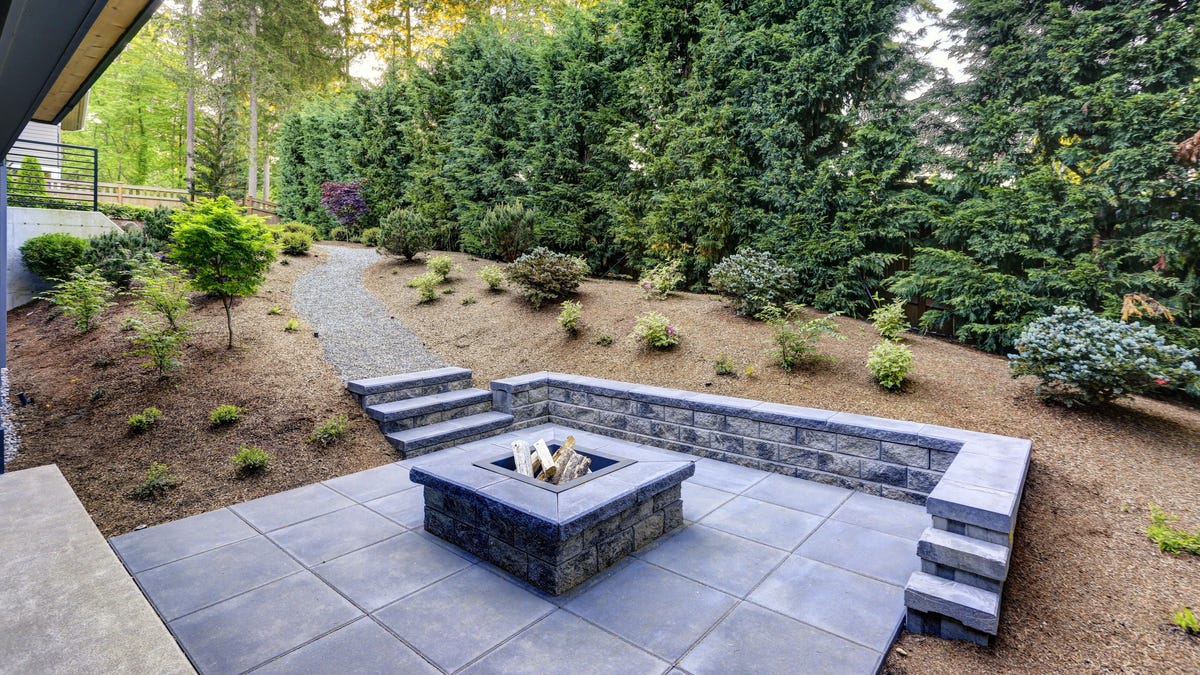How to Prevent Paving Slabs From Shifting Over Time

Patio paving slabs are a great choice for landscaping because you don’t have to build a structure underneath, they’re cheaper than other similar options, and can give your outdoor space a unique look. While flat space can be good for entertaining and relaxing, there are some maintenance issues when you use pavers instead of decking or concrete slab. One big problem is that over time, paving slabs can shift due to rain, temperature changes, or weight on it. Luckily, there are some things you can do to keep your paving stones in place for a seamless patio this season.
Build a solid and level foundation
A solid patio starts with a good foundation, and a good foundation goes deep. To have a solid foundation, you must dig and level to seven to nine inches. Since plant roots can dislodge paving stones over time, it’s a good idea to dig below the rootline of any patio-decorating plants. (As always, be sure to call 811 before you dig so you don’t hit underground utilities.)
If your foundation is uneven, the paving stones can slide off due to gravity, so it’s important to tamp the ground under the paving stones. Using a tamping tool for small areas and a dirt compactor for large areas, level and compact the dirt so that it does not move under the paving stones, which will cause problems later. To check its level, you can use a rope stretched around the perimeter between stakes tied at the same height and keep the ground parallel to the rope. Hang a string equalizer to straighten the string and then tamp down any raised areas or fill in the depressed areas. If the patio adjoins your home, you should slope it away from the structure by at least a quarter of an inch for every foot at an angle of about two degrees for drainage.
Use a weed barrier and fill cracks with gravel
As mentioned earlier, plant roots can cause paving to shift, and weeding your patio isn’t exactly relaxing. Using a good weed barrier under the pavers will help prevent your patio from slipping. If you are using gravel or sand under paving stones, you can place a weed barrier between it and the soil.
Filling the gaps between stone pavers with gravel or sand is a key part of maintaining the stability of the entire system. You don’t want the pavers to roam, so rake in some gravel and pack it into the cracks to keep the base solid. Also, if you’re using brick or concrete pavers, make sure the pattern fits snugly together so everything is solid. If you have a spot where the pavers don’t fit snugly together, it’s best to trim them. You can do this with a stone disc saw , as long as the surface you are cutting is damp so that there is no dust. You should also consider wearing a concrete dust respirator because silica dust can be very harmful to your lungs. You can also use a hand saw to cut the pavers if they are not too thick.
Choose a strong edge
To keep your patio in place, you must make an edge or use pre-made patio edges . It comes in both vinyl and metal and is attached to your patio borders with stakes or spikes. You can also build an edge with paving stones , which is specially designed to provide a stable edge. Laying the paving slabs tightly together and the plants should not be on the surface is the goal when you make your edge, so this step will act like a fence holding the paving stones in place.